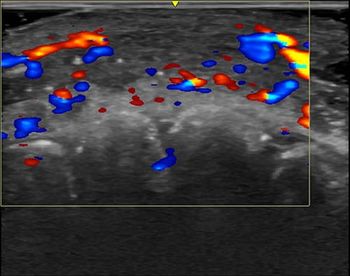
Be Prepared for Breast Emergencies in Medical Imaging
Breast emergencies are uncommon but require quick identification and management when patients present with complaints, such as mastitis and breast abscesses.
Breast emergencies are uncommon, but when they do occur, they require quick identification and management, according to an article published in the
The most common breast emergencies encountered for diagnosis or treatment are: mastitis or breast abscesses, and as a result of interventional procedures, pseudoaneurysms, post-biopsy hematomas and wire migration. Uncommonly, physicians may encounter seatbelt injuries or milk fistulas resulting from a core biopsy.
Imaging for mastitis is not always required as most cases are treated based on symptoms. If the patient does not respond to antibiotics, she may be referred for an ultrasound. “Imaging is pursued for evaluation of an access in cases of long-standing symptoms, no resolution with antibiotics, or a palpable mass,” the authors wrote. Recommendations for mammography vary in the literature, ranging from recommendations for mammography in all women over age 30and older to only for nonpuerperal cases of inflammation. Mammography during acute inflammation may be intensely uncomfortable for the patient, so imaging after the acute phase is generally recommended.
For women who present with post biopsy hemorrhage and hematoma, mammography may show a new mass at the biopsy site. On ultrasound, “hemorrhage appears as an area of hypechogenicity that can be seen to track along the shaft of the needle and follow the tissue planes,” said the authors. Active extravasation and pseudoaneurysm formation may be detected by angiography.
Mammography for pseudoaneurysm can also be used to detect a circumscribed mass next to a blood vessel. However, ultrasound is the preferred imaging method. “Ultrasound imaging allows identification of the neck of the pseudoaneurysm connecting to the adjacent artery,” according to the article. If a patient is suspected to have migration of a wire, it may be necessary to perform mammography, chest radiography, chest CT or fluoroscopy to detect where the wire has gone.
Seatbelt injuries, while uncommon, may result in chest wall soft-tissue injury of the breasts, clavicle, sternum and rib, in addition to other injuries. If breast tissue has been injured, the bruising and swelling could continue for several months. Ultrasounds are less specific in these seatbelt injuries. Mammograms may identify linear or band like density, skin thickening and fat necrosis, which may also be seen by MRI.
Newsletter
Stay at the forefront of radiology with the Diagnostic Imaging newsletter, delivering the latest news, clinical insights, and imaging advancements for today’s radiologists.




























